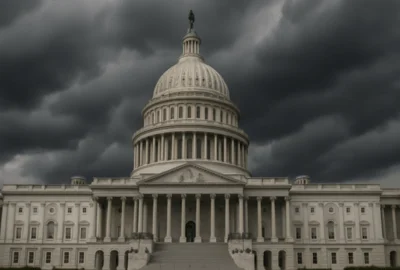Personal income increased $80.1 billion (0.4 percent) in November, according to estimates released today by the Bureau of Economic Analysis (tables 3 and 5). Disposable personal income (DPI) increased $68.6 billion (0.4 percent) and personal consumption expenditures (PCE) increased $19.8 billion (0.1 percent).
The PCE price index increased 0.1 percent. Excluding food and energy, the PCE price index increased 0.2 percent (table 9). Real DPI increased 0.3 percent in November and real PCE increased less than 0.1 percent; goods decreased 0.6 percent and services increased 0.3 percent (tables 5 and 7).
2022
July Aug. Sept. Oct. Nov.
| Percent change from preceding month | ||||||
|---|---|---|---|---|---|---|
| Personal income: | ||||||
| Current dollars | 0.4 | 0.4 | 0.4 | 0.7 | 0.4 | |
| Disposable personal income: | ||||||
| Current dollars | 0.4 | 0.4 | 0.4 | 0.7 | 0.4 | |
| Chained (2012) dollars | 0.5 | 0.1 | 0.0 | 0.4 | 0.3 | |
| Personal consumption expenditures (PCE): | ||||||
| Current dollars | -0.1 | 0.7 | 0.6 | 0.9 | 0.1 | |
| Chained (2012) dollars | 0.0 | 0.5 | 0.3 | 0.5 | 0.0 | |
| Price indexes: | ||||||
| PCE | -0.1 | 0.3 | 0.3 | 0.4 | 0.1 | |
| PCE, excluding food and energy | 0.1 | 0.6 | 0.5 | 0.3 | 0.2 | |
| Price indexes: | Percent change from month one year ago | |||||
| PCE | 6.4 | 6.3 | 6.3 | 6.1 | 5.5 | |
| PCE, excluding food and energy | 4.7 | 4.9 | 5.2 | 5.0 | 4.7 | |
The increase in current-dollar personal income in November primarily reflected increases in compensation and personal income receipts on assets (table 3). The increase in compensation reflected increases in private wages and salaries in both services-producing industries and goods-producing industries.
The $19.8 billion increase in current-dollar PCE in November reflected an increase of $79.2 billion in spending for services that was partly offset by a $59.5 billion decrease in spending for goods (table 3). Within services, the largest contributor to the increase was spending on housing. Within goods, spending on new motor vehicles (mainly new light trucks) was the leading contributor to the decrease. Detailed information on monthly PCE spending can be found on Table 2.3.5U.
Personal outlays increased $26.6 billion in November (table 3). Personal saving was $461.2 billion in November and the personal saving rate—personal saving as a percentage of disposable personal income—was 2.4 percent (table 1).
Prices
From the preceding month, the PCE price index for November increased 0.1 percent (table 9). Prices for goods decreased 0.4 percent and prices for services increased 0.4 percent. Food prices increased 0.3 percent and energy prices decreased 1.5 percent. Excluding food and energy, the PCE price index increased 0.2 percent. Detailed monthly PCE price indexes can be found on Table 2.3.4U.
From the same month one year ago, the PCE price index for November increased 5.5 percent (table 11). Prices for goods increased 6.1 percent and prices for services increased 5.2 percent. Food prices increased 11.2 percent and energy prices increased 13.6 percent. Excluding food and energy, the PCE price index increased 4.7 percent from one year ago.
Real PCE
In November, real PCE increased less than 0.1 percent, reflecting a decrease of 0.6 percent in spending on goods and an increase of 0.3 percent in spending on services (table 7). Within goods, spending on new motor vehicles was the leading contributor to the decrease. Within services, the largest contributor to the increase was spending on food services and accommodations. Detailed information on monthly real PCE spending can be found on Table 2.3.6U.
Updates to Personal Income and Outlays
Estimates have been updated for July through October. Revised and previously published changes from the preceding month for current-dollar personal income, and for current-dollar and chained (2012) dollar DPI and PCE, are provided below.
Original source can be found here.








